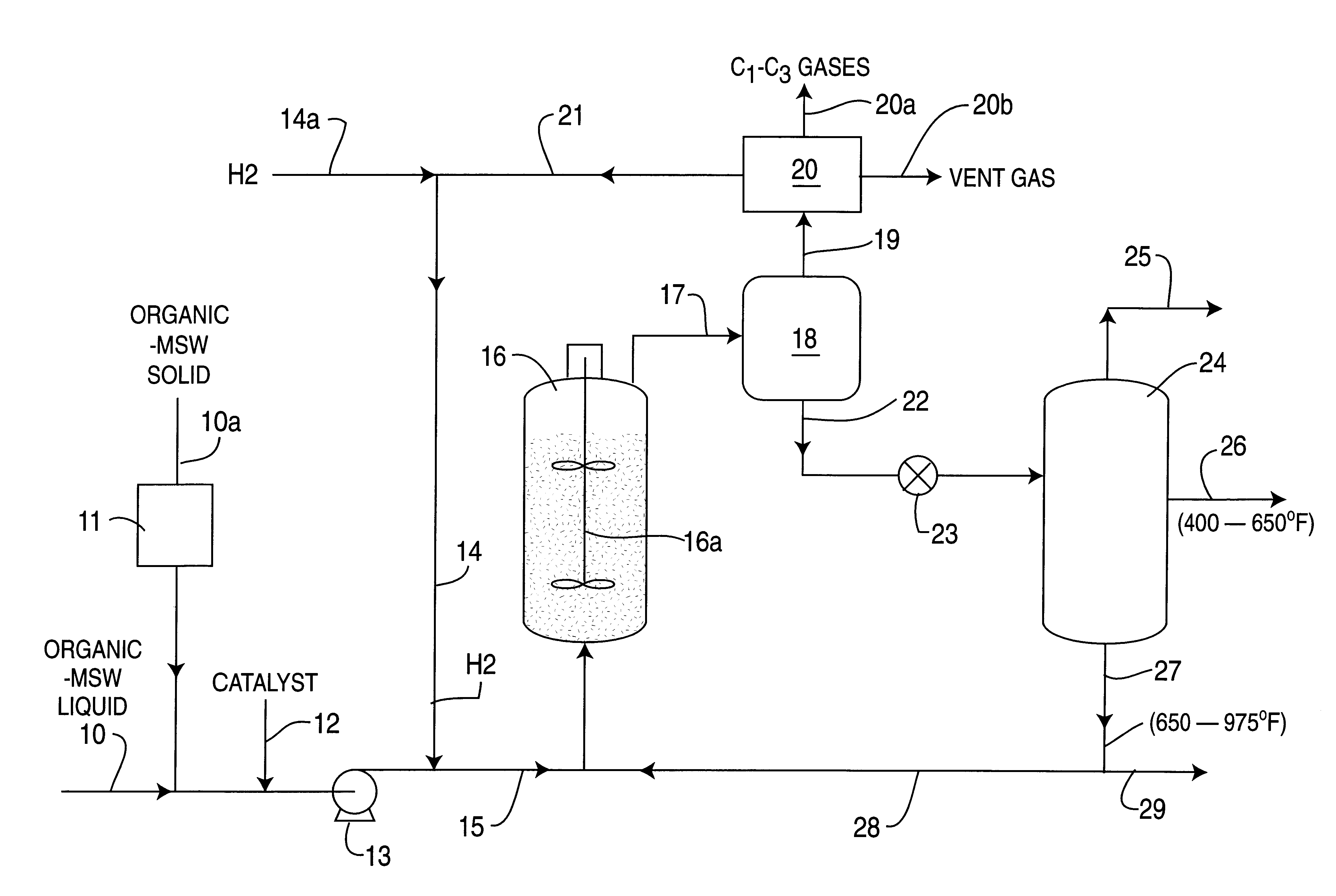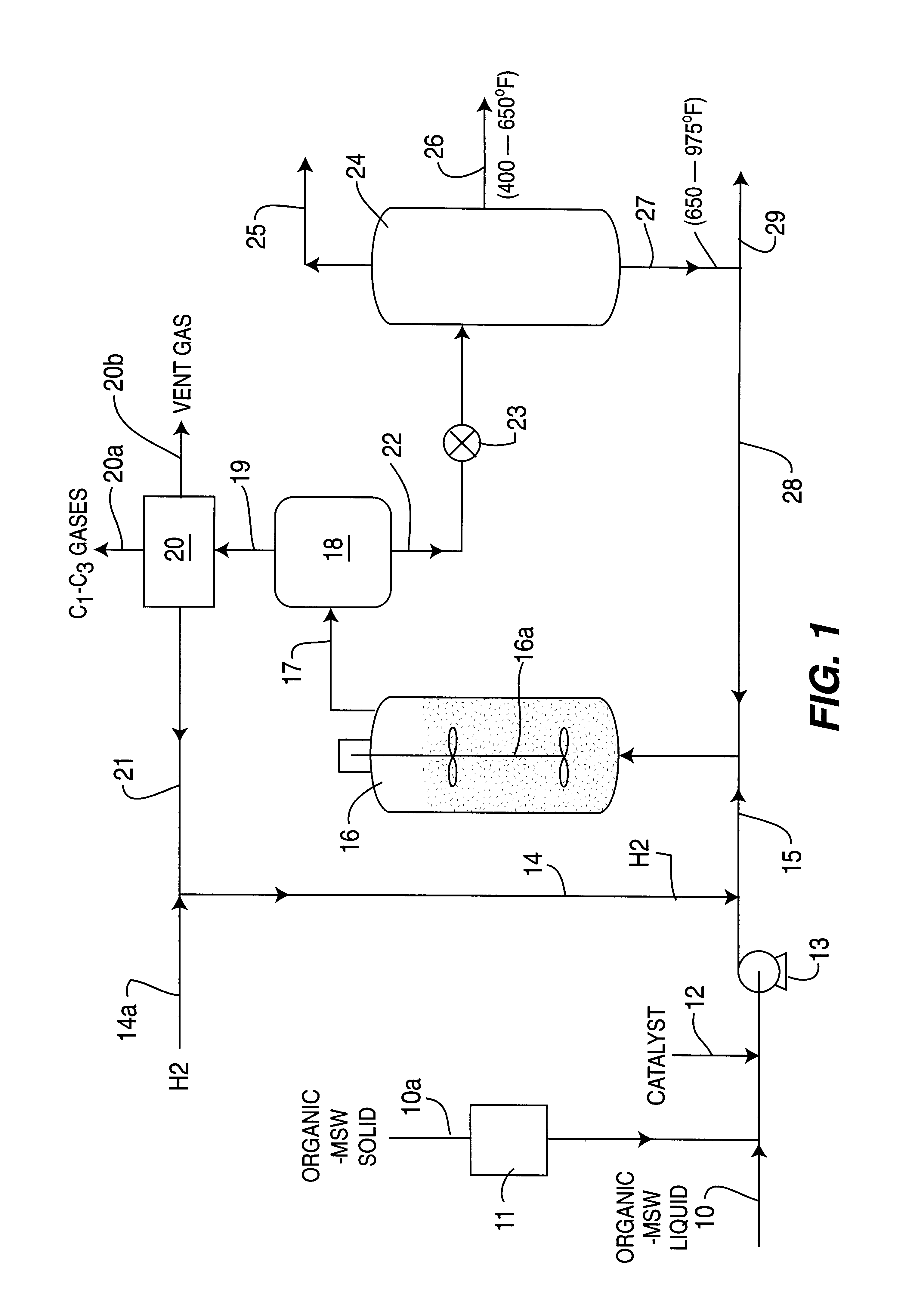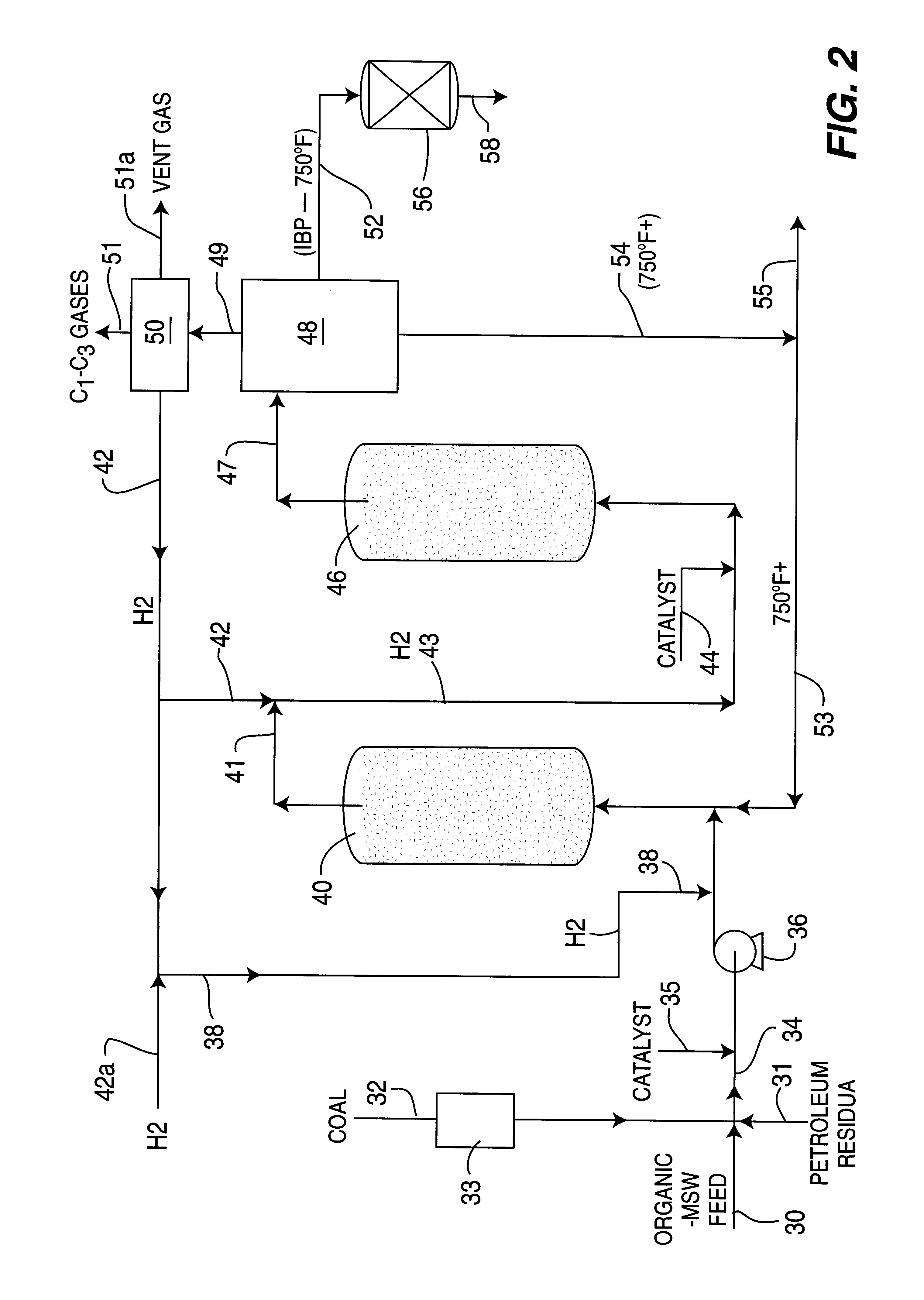Catalytic hydroconversion of chemically digested organic municipal solid waste materials
a municipal solid waste and hydroconversion technology, applied in the direction of hydrocarbon oil cracking, organic chemistry, chemistry apparatus and processes, etc., can solve the problems of unavailability of catalytic hydroconversion processes, and achieve the effects of increasing catalytic activity, increasing aliphatic activity, and increasing surface area
- Summary
- Abstract
- Description
- Claims
- Application Information
AI Technical Summary
Benefits of technology
Problems solved by technology
Method used
Image
Examples
example no.1
EXAMPLE No. 1
A sample of the unique chemically digested organic-MSW feed material of this invention was characterized by infared (IR) analysis utilizing a suitable Mattson FTIR instrument, with results as shown by FIG. 4. The IR spectra shows the aromatic structure by having wavenumber peaks located between 700-1660 wavenumbers. Also incorporated into the digested organic-MSW material is the presence of intermolecularly hydrogen-bonded hydroxyl groups which is seen at 3300 wavenumbers. Absent from the IR spectra are any strong wavenumber peaks associated with carbonyl functionality (about 1700 wavenumbers)
example no.2
EXAMPLE No. 2
The basic process of this invention was verified by experimental catalytic hydroconversion runs made by reacting chemically digested organic-MSW feed material samples in a microautoclave reactor unit together with a known particulate catalyst consisting of cobalt-molybdenum on alumina support. The reaction conditions used and results achieved are provided in the following Table 1.
From the results above, it is seen that relatively high hydroconversion of the chemically digested organic-MSW feed material exceeding about 93 wt. % THF-soluble material was achieved for producing desirable high yields of hydrocarbon gas and liquid functions, with only about 7-8 wt. % yield of THF-insoluble materials. The resulting THF-soluble liquid material is useful as hydrocarbon liquid fuels. Further analysis of the liquid fraction product indicated that it contained 5 wt. % of IBP-400.degree. F. napatha fraction, 53 wt. % of 400-650.degree. F. gas oil fraction, and 42 wt. % of 650-975.de...
example no.3
EXAMPLE No. 3
The technical feasibility of hydroprocessing a 50 / 50 wt. % blend of the chemically digested organic-MSW material of Example No. 2 together with a particulate bituminous coal and a known particulate cobalt-moly-alumina catalyst was verified by other experimental hydroconversion runs utilizing a microautoclave reactor unit. The reaction conditions used and product results achieved are provided in Table 2 below.
Based on the above results, it is seen that the chemically digested organic-MSW material blended in a 50 / 50 wt. % mixture with particulate bituminous coal can be successfully hydroconverted to produce high yields exceeding 92 wt. % of THF-soluble material, which would be useful as liquid fuels such as for transportation fuels, i.e. gasoline, kerosene, and diesel fuel. Further analysis of the liquid fraction product revealed that it contained 10 wt. % IBP-400.degree. F. naphtha, 54 wt. % 400-650.degree. F. gas oil, and 36 wt. % 650-975.degree. F. heavy gas oil. For h...
PUM
| Property | Measurement | Unit |
|---|---|---|
| hydrogen partial pressure | aaaaa | aaaaa |
| wt. % | aaaaa | aaaaa |
| hydrogen partial pressure | aaaaa | aaaaa |
Abstract
Description
Claims
Application Information
 Login to View More
Login to View More - R&D
- Intellectual Property
- Life Sciences
- Materials
- Tech Scout
- Unparalleled Data Quality
- Higher Quality Content
- 60% Fewer Hallucinations
Browse by: Latest US Patents, China's latest patents, Technical Efficacy Thesaurus, Application Domain, Technology Topic, Popular Technical Reports.
© 2025 PatSnap. All rights reserved.Legal|Privacy policy|Modern Slavery Act Transparency Statement|Sitemap|About US| Contact US: help@patsnap.com



